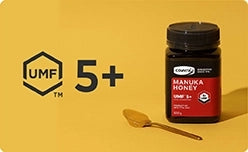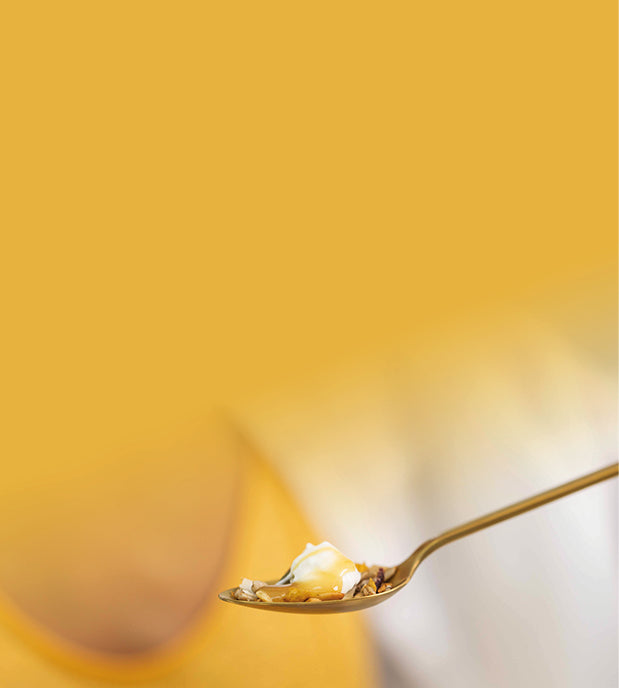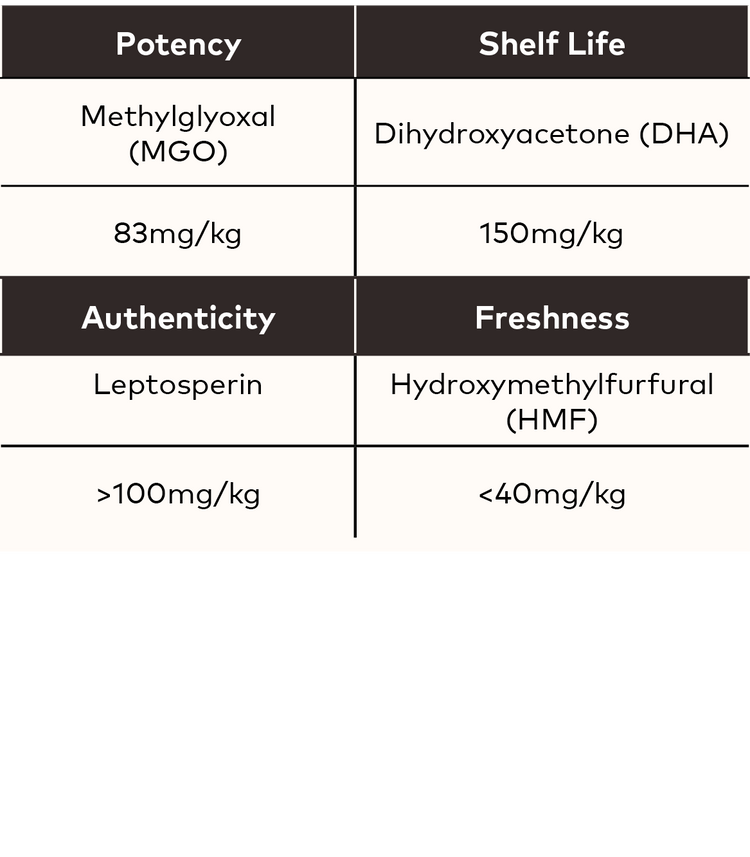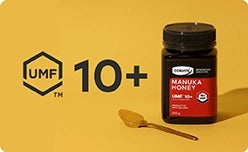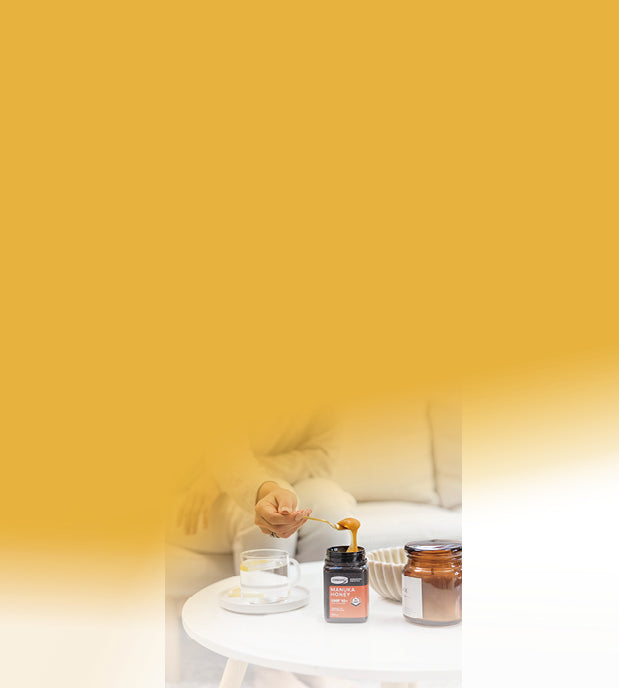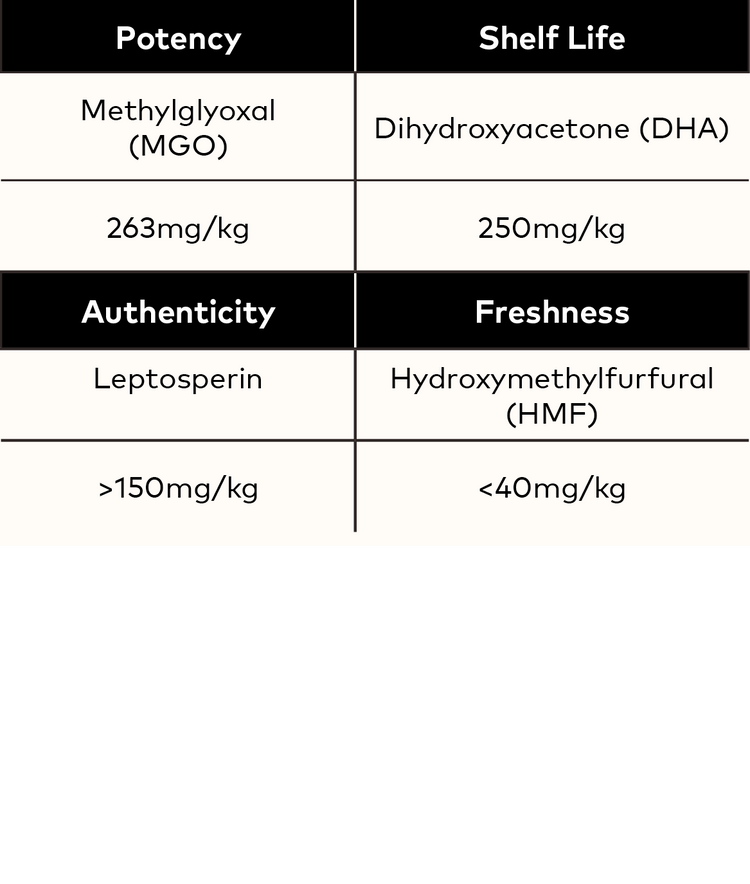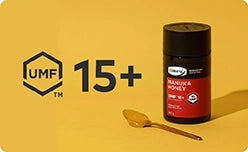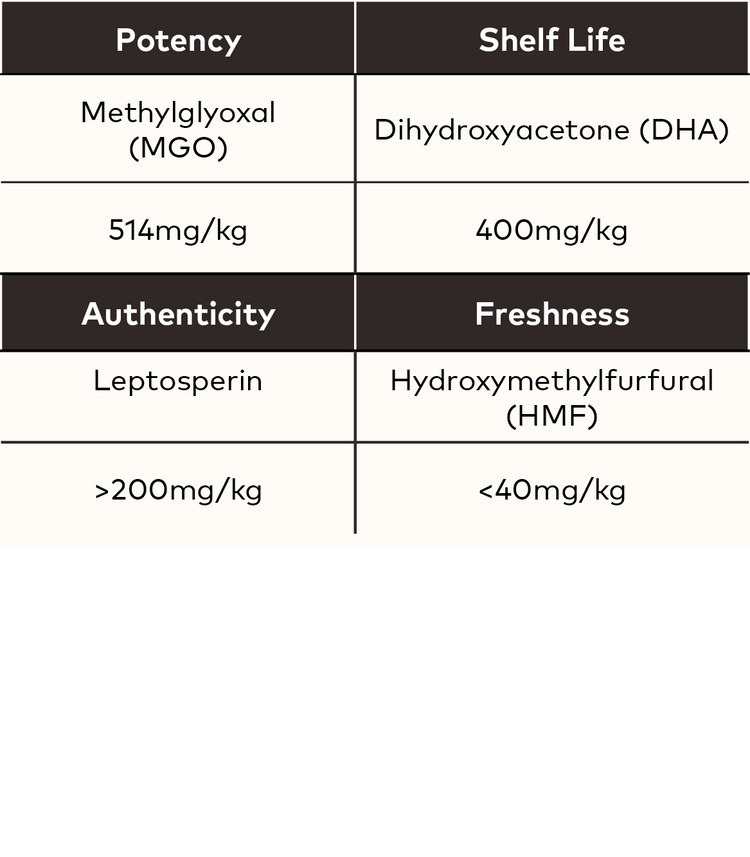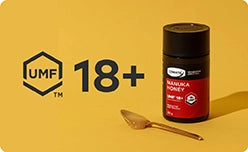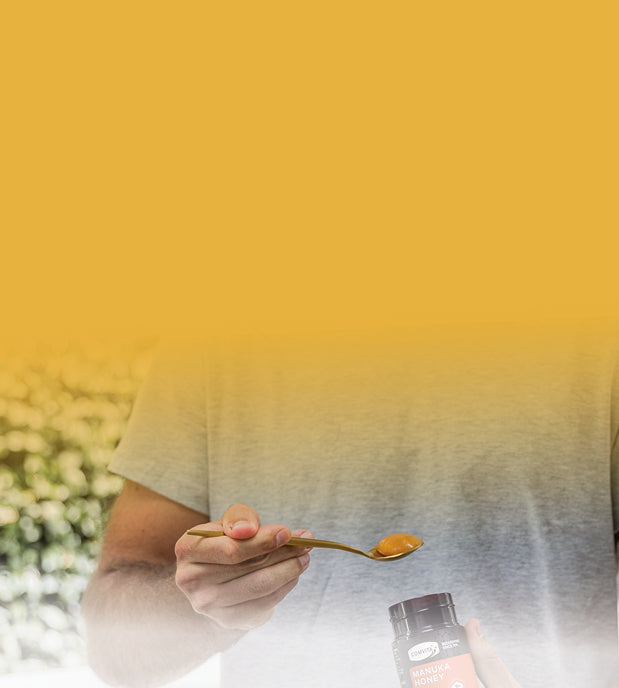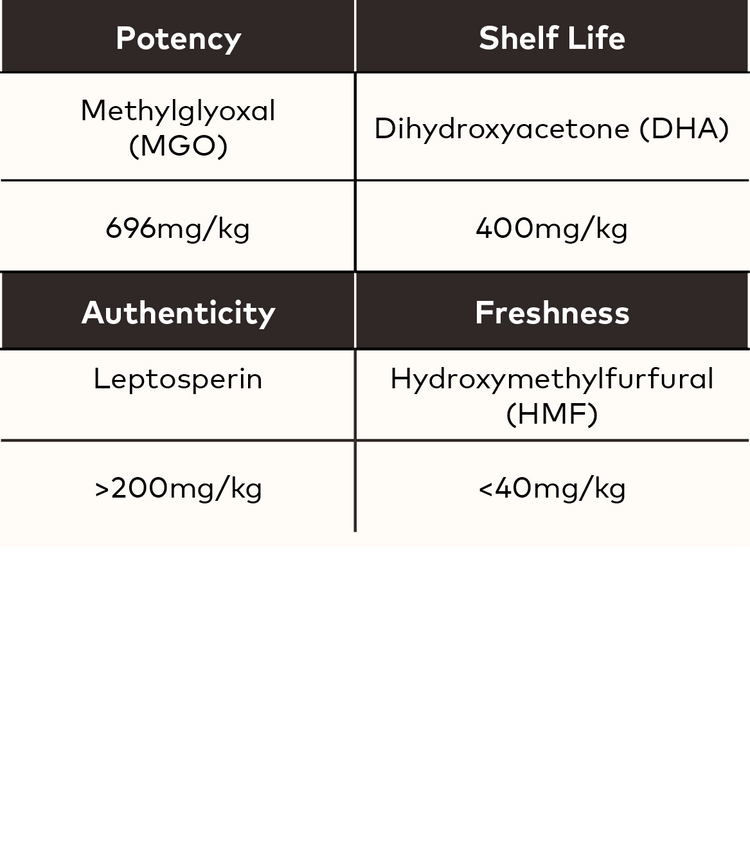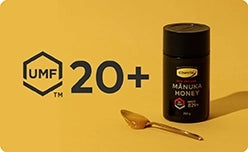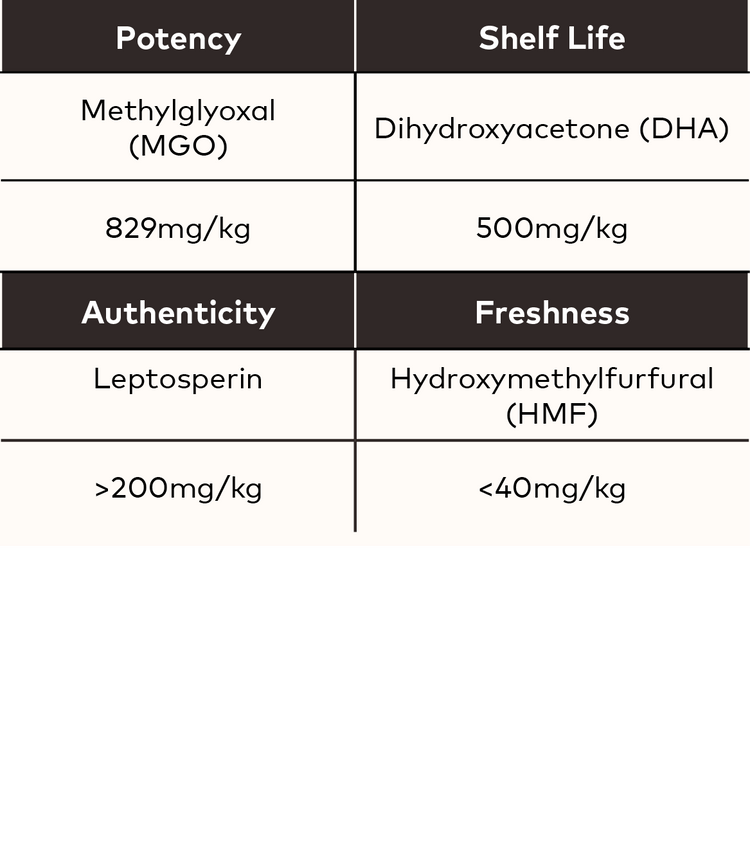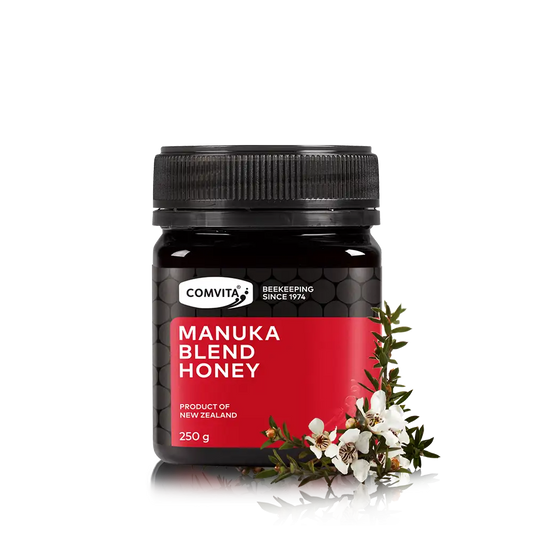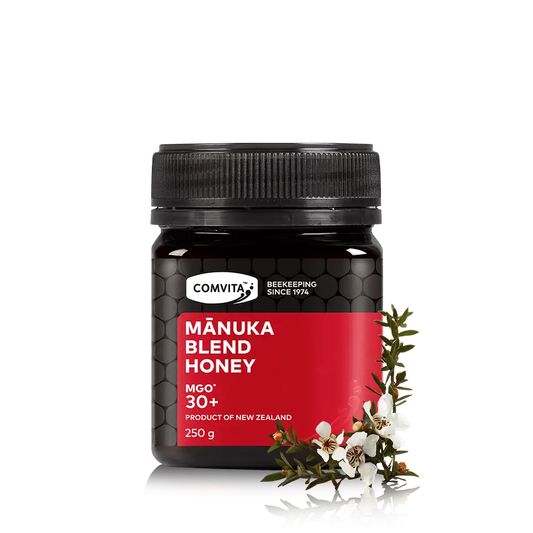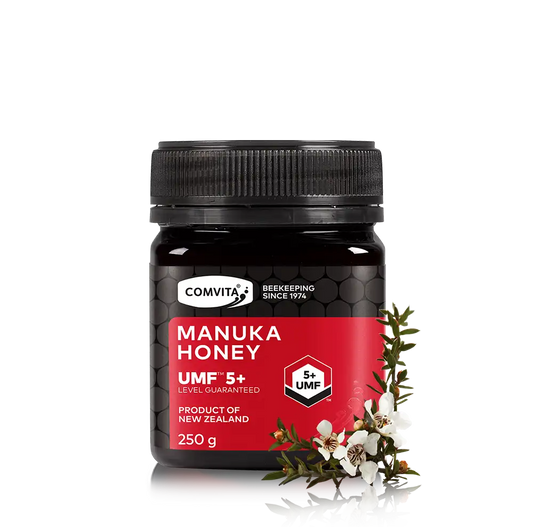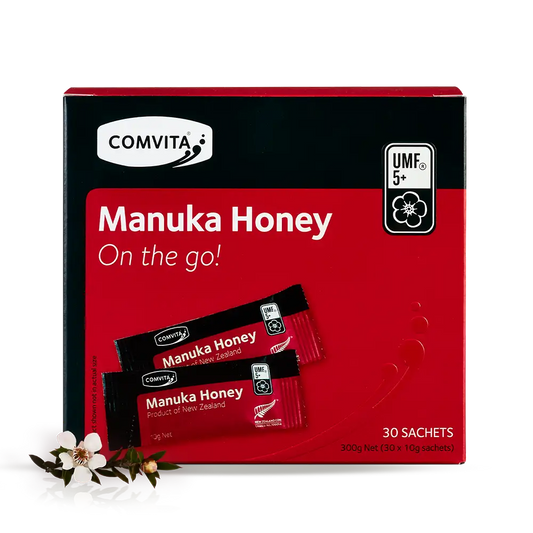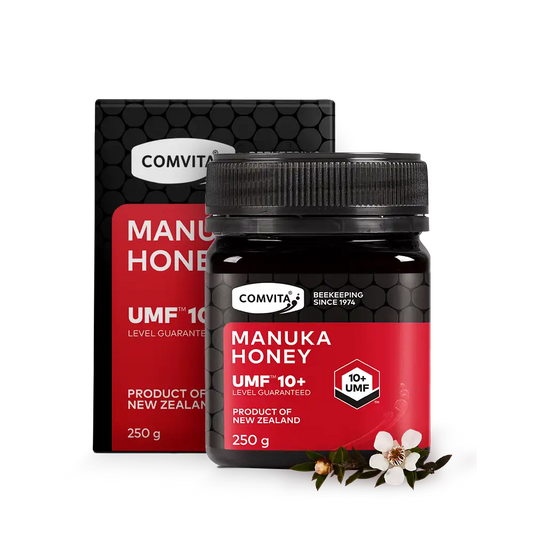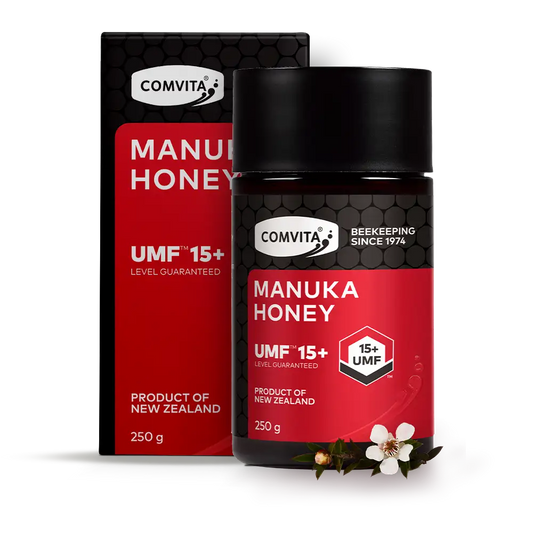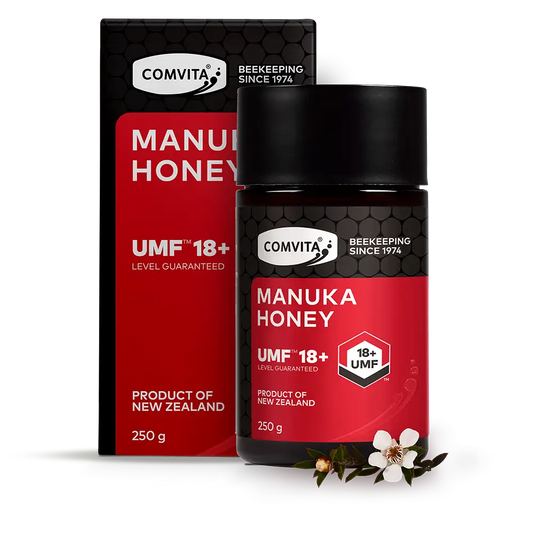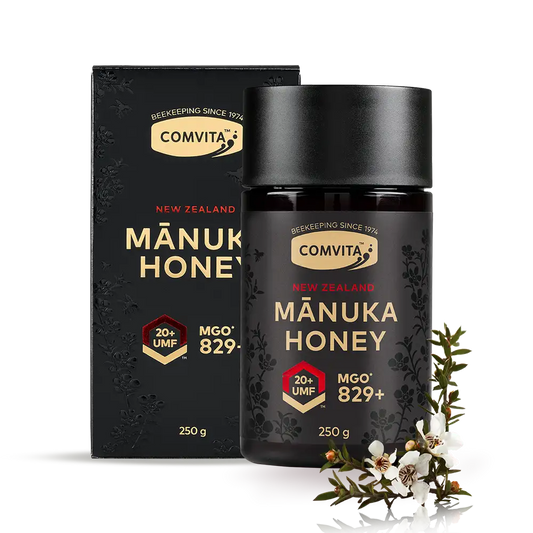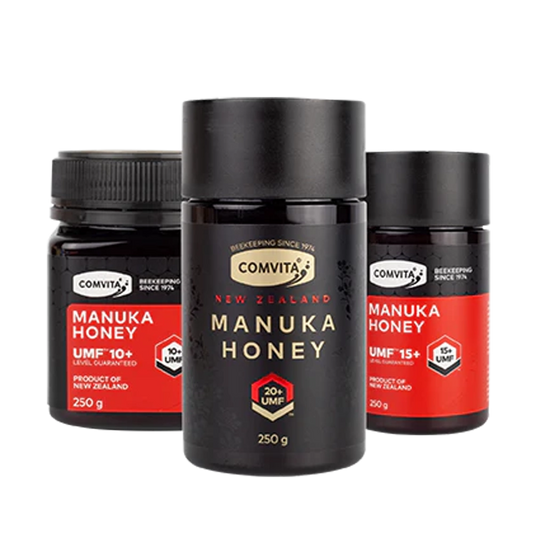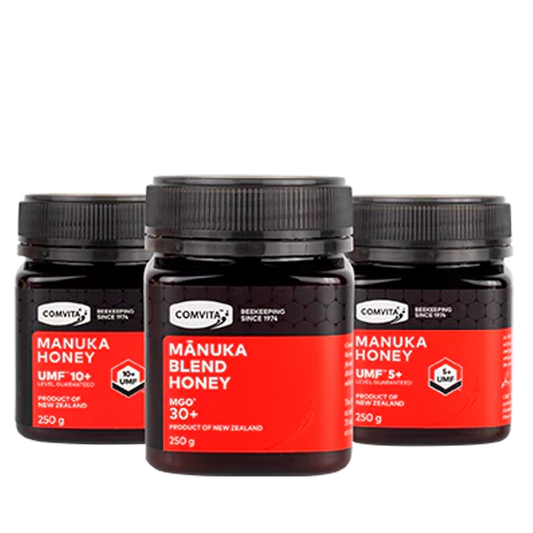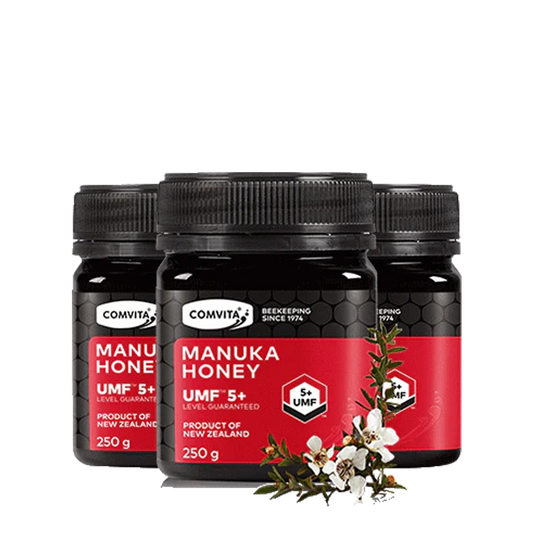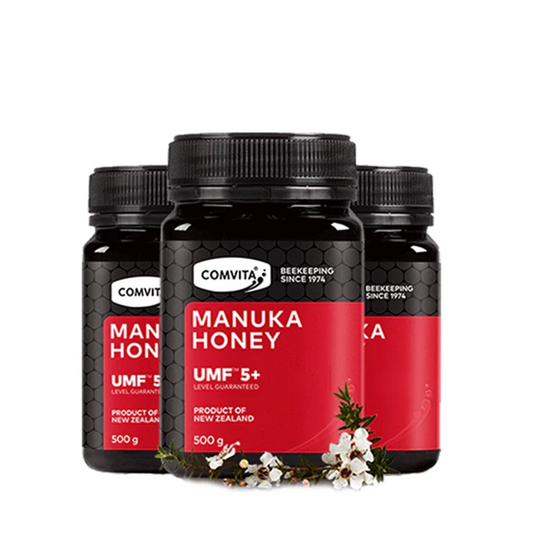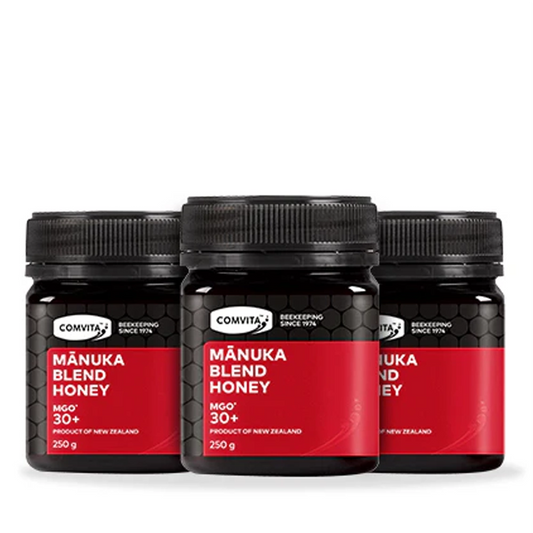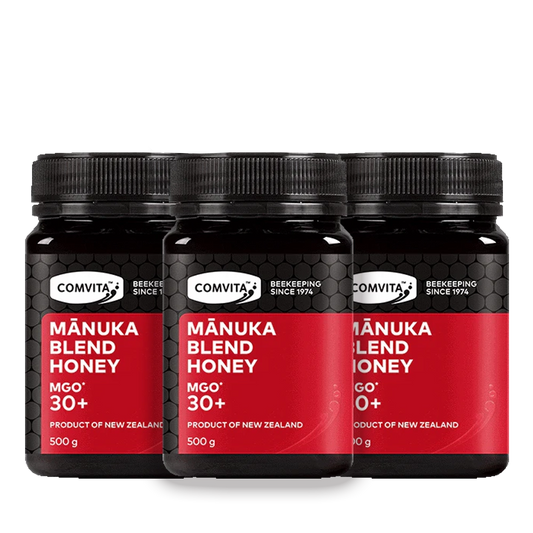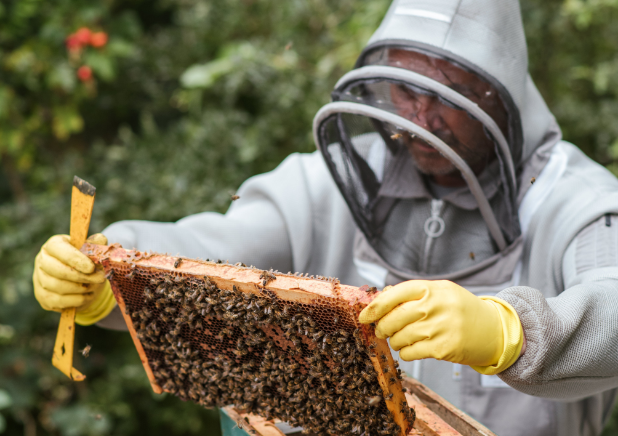Which Mānuka Honey is right for you?

DAILY: Vitality & Wellness
- UMF™ 5+ is our most versatile grade of Mānuka honey.
- Rich in natural compounds, with a smooth flavour, it’s easy to incorporate Mānuka goodness into your nutritious daily menu.
- It’s a great snack, or sugar replacement that has the benefits of Mānuka.

UMF™ LevelGuaranteed in every spoonful, to the bottom of the jar.

DAILY: Nourishing Wellness
- UMF™ 10+ is one of our best-selling grades of Mānuka honey.
- Recommended grade for people seeking to maintain balance; consumed straight off the spoon, or as a tonic when mixed with warm water.
- It also makes a great pre work-out energy boost.

UMF™ LevelGuaranteed in every spoonful, to the bottom of the jar.

DAILY: Holistic Health inside and out
- UMF™ 15+ is recommended for people seeking the antibacterial, anti-inflammatory benefits of high UMF™ Mānuka honey.
- Consume straight off the spoon
- Soothing when applied to the skin for treating certain conditions.

UMF™ Level Guaranteed in every spoonful, to the bottom of the jar.

TARGETED: Strong and potent
- UMF™ 18+ is recommended for people seeking to step up their everyday wellness regime and wanting an increased level of antibacterial activity provided through higher MGO levels.
- Most effective when consumed straight off the spoon.

UMF™ Level Guaranteed in every spoonful, to the bottom of the jar.

TARGETED: Pure, Potent and Powerful
- UMF™ 20+ is recommended for people seeking the benefits of very high strength Mānuka honey.
- To support and boost digestive wellness when you simply need the best.
- Most effective when consumed straight off the spoon.

UMF™ Level Guaranteed in every spoonful, to the bottom of the jar.
-
Mānuka Blend Honey
Regular price From $14.70Regular priceUnit price per$14.70Sale price From $14.70 -
Mānuka Blend Honey MGO 30+
Regular price From $15.70Regular priceUnit price per$15.70Sale price From $15.70 -
UMF 5+ Mānuka Honey
Regular price From $9.95Regular priceUnit price per$9.95Sale price From $9.95 -
UMF 5+ Mānuka Honey Sachets
Regular price From $32.50Regular priceUnit price per$32.50Sale price From $32.50 -
UMF 10+ Mānuka Honey
Regular price From $68.00Regular priceUnit price per$68.00Sale price From $68.00 -
UMF 15+ Mānuka Honey
Regular price From $156.00Regular priceUnit price per$156.00Sale price From $156.00 -
UMF 18+ Mānuka Honey
Regular price $207.00Regular priceUnit price per$207.00Sale price $207.00 -
UMF 20+ Mānuka Honey
Regular price $257.00Regular priceUnit price per$257.00Sale price $257.00 -
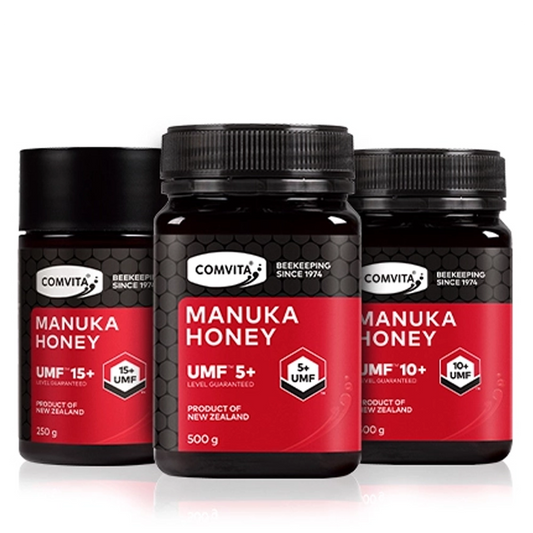 Sold out
Sold outThe Golden Trio Bundle
Regular price $335.00Regular priceUnit price per -
Mānuka Lovers Luxury Pack
Regular price $481.00Regular priceUnit price per -
Mānuka Lovers Essentials Pack
Regular price $140.50Regular priceUnit price per -
UMF 5+ Mānuka Honey 3-Pack
Regular price $129.00Regular priceUnit price per -
UMF 5+ Mānuka Honey 3-pack
Regular price $195.00Regular priceUnit price per -
UMF 5+ Mānuka Honey 2-Pack
Regular price $240.00Regular priceUnit price per -
Mānuka Blend Honey MGO 30+ 3 Pack
Regular price $47.10Regular priceUnit price per -
Mānuka Blend Honey MGO 30+ 3-pack
Regular price $88.50Regular priceUnit price per
 is here! Shop now, pay later in 4 easy installments
is here! Shop now, pay later in 4 easy installments


